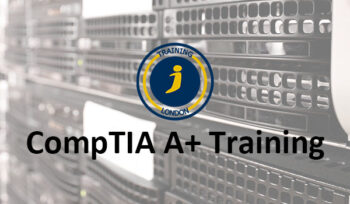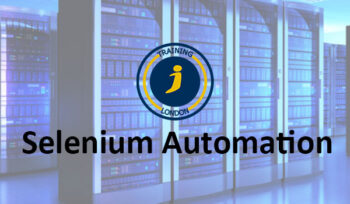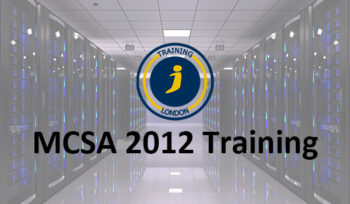COURSE OVERVIEW
CCNA TRAINING
COURSE INSIGHT
The Cisco CCNA certification, representing Cisco Certified Network Associate, applies to a wide range of professional specializations that Cisco provides to the IT community. Organizations support these industry standard certifications as they show the professional acumen and expertise of the job candidate
Cisco Certified Network Associate (CCNA) is a popular beginner level certification in computer networking developed by Cisco Systems. CCNA examination is to recognize basic competency in installation and support of medium-sized networks. The core CCNA certification exam consists of 90-minute questions. The exam has no prerequisites, although Cisco and other companies offer various formal training courses to help students prepare for the exam. Topics covered on the CCNA exam include the following topics; LAN and WAN design (including the OSI model) IP addressing Routers and routing protocols (including OSPF, EIGRP and RIP) VLAN (virtual LAN) and WLAN (wireless LAN) Network security and Management (including ACLs)
We deliver one of the best professional training programs in the industry. Specialists with extensive experience in the field conduct the lessons on this subject. The curriculum fits perfectly with professional standards with the latest industry changes.
CCNA TRAINING COURSE OUTLINE
- Understand the operation of data networks.
- Know the purpose and functions of network devices such as routers, switches, bridges and hubs.
- Be able to select components to meet a specific network requirement.
- Understand how certain applications can impact network performance.
- Know the protocols, purpose and operation of both the OSI and TCP/IP models.
- Describe the data flow between two hosts on a network
- Be able to choose the most appropriate cables, media, ports and connectors to connect network devices and hosts to a LAN.
- Understand the media access control method for Ethernet.
- Describe the basic switching concepts and the operation of switches.
- Configure and verify switch configuration including remote access management.
- Verify a network and switch operation using basic utilities such as ping, telnet and SSH.
- Describe VLANs and the need for routing between VLANs.
- Understand network segmentation and traffic management.
- Be able to configure and verify VLANs.
- Configure and verify trunking on Cisco switches.
- Understand advanced switching technologies:
- RSTP
- PVSTP
- EtherChannel
- Be able to configure and verify PVSTP operation.
- Describe the process of root bridge election.
- Example for Understanding Route Summarization
- Step 1: Summarize Winnipeg’s Routes
- Step 2: Summarize Calgary’s Routes
- Step 3: Summarize Edmonton’s Routes
- Step 4: Summarize Vancouver’s Routes
- Route Summarization and Route Flapping
- Requirements for Route Summarization
- Describe the need for public and private addresses for IPv4.
- Understand IPv6 addresses.
- Describe the appropriate IPv6 addressing scheme for a LAN/WAN environment.
- Describe the appropriate IPv4 addressing scheme for a LAN/WAN environment, including VLSM and summarization.
- Describe the technologies required to run IPv6 and IPv4 concurrently such as dual stack.
- Understand the basic routing concepts.
- Understand the boot process of a Cisco router.
- Configure and verify a basic router configuration using the command line interface.
- Configure and verify both serial and Ethernet interfaces.
- Be able to verify the network connectivity and configuration of a router.
- Configure a static or default route given specific requirements, then verify.
- Manage Cisco IOS files and image(s).
- Understand Cisco IOS licensing.
- Understand and distinguish different methods of routing and routing protocols.
- Configure and verify EIGRP in a single autonomous system.
- Configure and verify OSPF (v2 and v3) in a single area.
- Configure and verify interVLAN routing using router-on-a-stick.
- Be able to configure SVI interfaces.
- Configure and verify DHCP on a Cisco router.
- Understand the features and applications of each type of ACL.
- Be able to configure and verify ACLs.
- Understand the basic operation of NAT.
- Configure and verify NAT based on a set of network requirements.
- Be able to configure and verify NTP as a client.
- Recognize high availability FHRP.
- Understand, configure and verify Syslog and utilize Syslog output.
- Understand SNMP v2 and v3.
- Be able to configure and verify device security features.
- Understand, configure and verify switch port security features.
- Configure and verify ACLs for filtering network traffic.
- Limit telnet and SSH access to a router by configuring ACLs.
- Troubleshoot and correct common issues concerning IP addressing and host configurations.
- Be able to utilize netflow and monitor data.
- Troubleshoot and fix spanning tree operation.
- Troubleshoot and resolve routing issues, including OSPF, and EIGRP.
- Troubleshoot and correct VLAN problems.
- Identify and resolve interVLAN problems.
- Troubleshoot and resolve switch trunking issues.
- Troubleshoot and fix ACL problems.
- Troubleshoot and correct layer 1 problems.
- Troubleshoot and correct WAN issues.
- Troubleshoot EtherChannel issues.
- Understand and identify different WAN technologies including:
- Metro Ethernet
- Frame Relay
- VSAT
- Cellular 3G and 4G
- MPLS
- T1/E1
- ISDN
- DSL
- Cable
- VPN
- Configure and verify a serial WAN connection.
- Configure Frame Relay on Cisco routers including verification.
- Be able to configure and verify a PPP connection between two Cisco routers.
- Configure and troubleshoot PPPoE.
SKILLS GAINED
- LAN and WAN design (including the OSI model)
- IP addressing Routers and routing protocols (including OSPF, EIGRP and RIP)
- VLAN (virtual LAN) and WLAN (wireless LAN)
- Network security and Management (including ACLs)
- Attempt and pass the CCNA exam.
Dates And Prices
| Start Date | Timing | Days | Duration | Mode Of Training | Request Price/Future Dates |
|---|---|---|---|---|---|
| 06.01.2025 | 10:00 – 18:00 | Mon - Fri | 5 Days | Classroom Based / Live Virtual Online | |
| 13.01.2025 | 10:00 – 18:00 | Mon - Fri | 5 Days | Classroom Based / Live Virtual Online | |
| 15.01.2025 | 10:00 – 18:00 | Wed only | 5 Weeks | Classroom Based / Live Virtual Online | |
| 20.01.2025 | 10:00 – 18:00 | Mon - Fri | 5 Days | Classroom Based / Live Virtual Online | |
| 27.01.2025 | 10:00 – 18:00 | Mon - Fri | 5 Days | Classroom Based / Live Virtual Online | |
| 29.01.2025 | 10:00 – 18:00 | Wed only | 5 Weeks | Classroom Based / Live Virtual Online | |
| 03.02.2025 | 10:00 – 18:00 | Mon - Fri | 5 Days | Classroom Based / Live Virtual Online | |
| 10.02.2025 | 10:00 – 18:00 | Mon - Fri | 5 Days | Classroom Based / Live Virtual Online | |
| 12.02.2025 | 10:00 – 18:00 | Wed only | 5 Weeks | Classroom Based / Live Virtual Online | |
| 17.02.2025 | 10:00 – 18:00 | Mon - Fri | 5 Days | Classroom Based / Live Virtual Online | |
| 24.02.2025 | 10:00 – 18:00 | Mon - Fri | 5 Days | Classroom Based / Live Virtual Online | |
| 26.02.2025 | 10:00 – 18:00 | Wed only | 5 Weeks | Classroom Based / Live Virtual Online | |
| 03.03.2025 | 10:00 – 18:00 | Mon - Fri | 5 Days | Classroom Based / Live Virtual Online | |
| 10.03.2025 | 10:00 – 18:00 | Mon - Fri | 5 Days | Classroom Based / Live Virtual Online | |
| 12.03.2025 | 10:00 – 18:00 | Wed only | 5 Weeks | Classroom Based / Live Virtual Online | |
| 17.03.2025 | 10:00 – 18:00 | Mon - Fri | 5 Days | Classroom Based / Live Virtual Online | |
| 24.03.2025 | 10:00 – 18:00 | Mon - Fri | 5 Days | Classroom Based / Live Virtual Online | |
| 26.03.2025 | 10:00 – 18:00 | Wed only | 5 Weeks | Classroom Based / Live Virtual Online | |
| 31.03.2025 | 10:00 – 18:00 | Mon - Fri | 5 Days | Classroom Based / Live Virtual Online | |
| 07.04.2025 | 10:00 – 18:00 | Mon - Fri | 5 Days | Classroom Based / Live Virtual Online |





